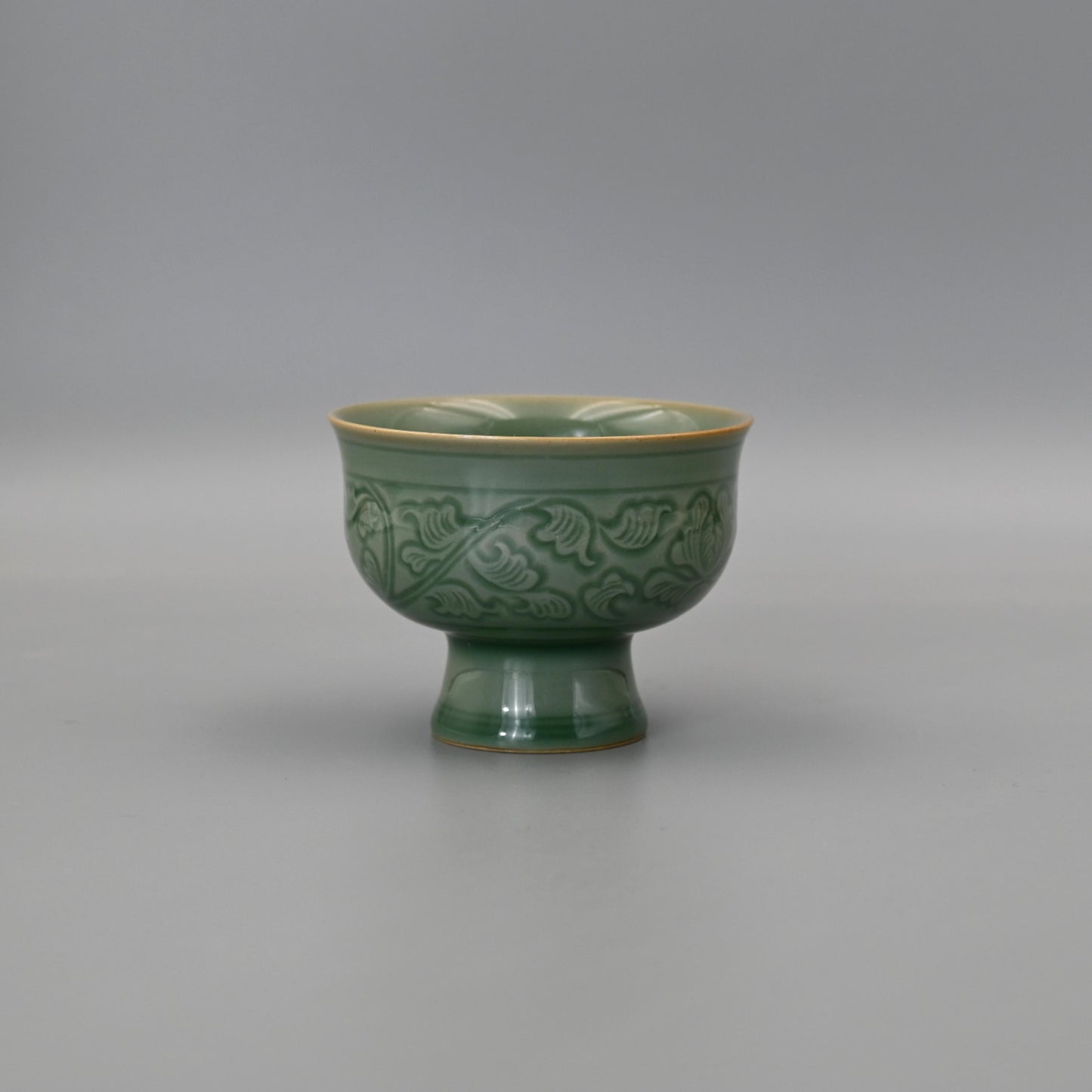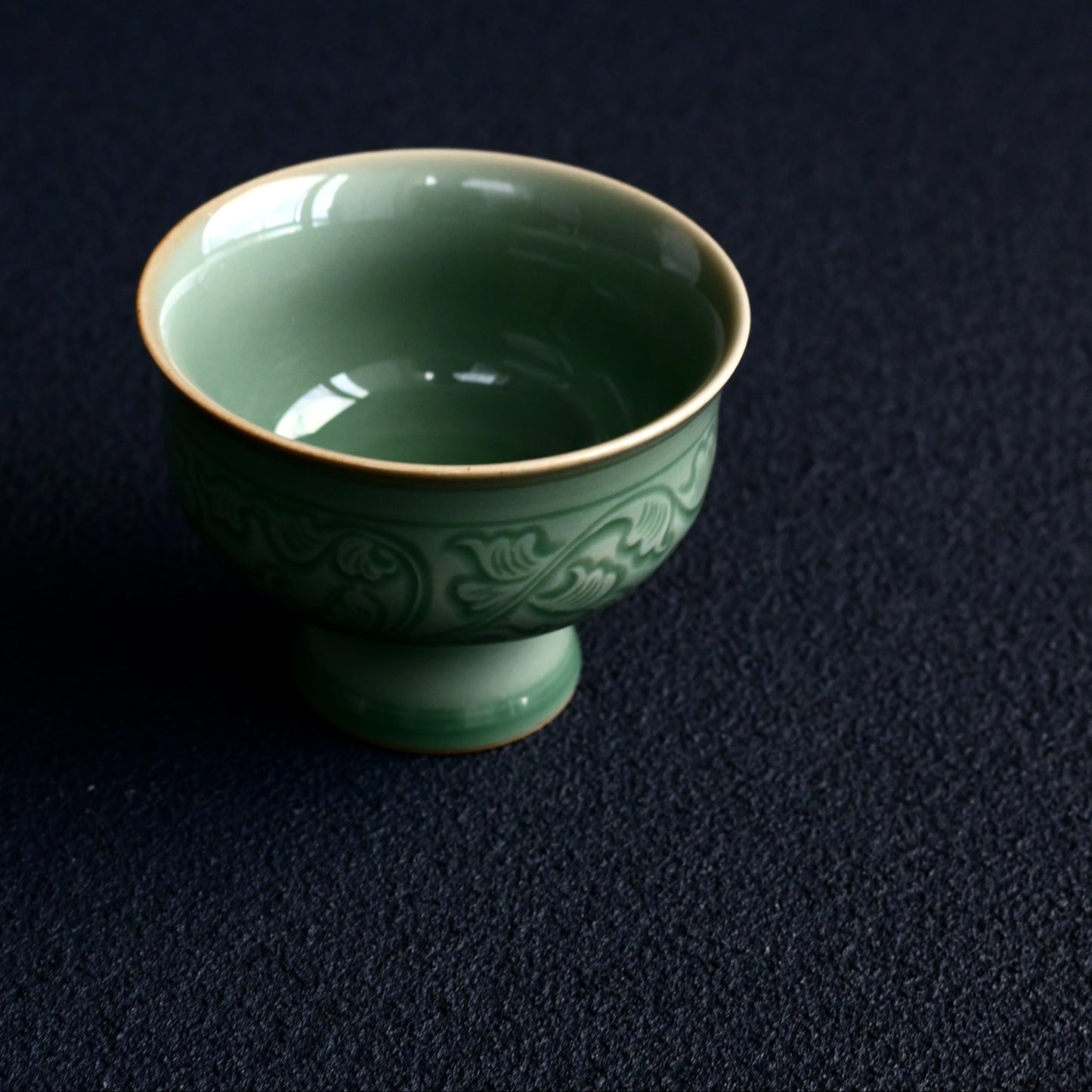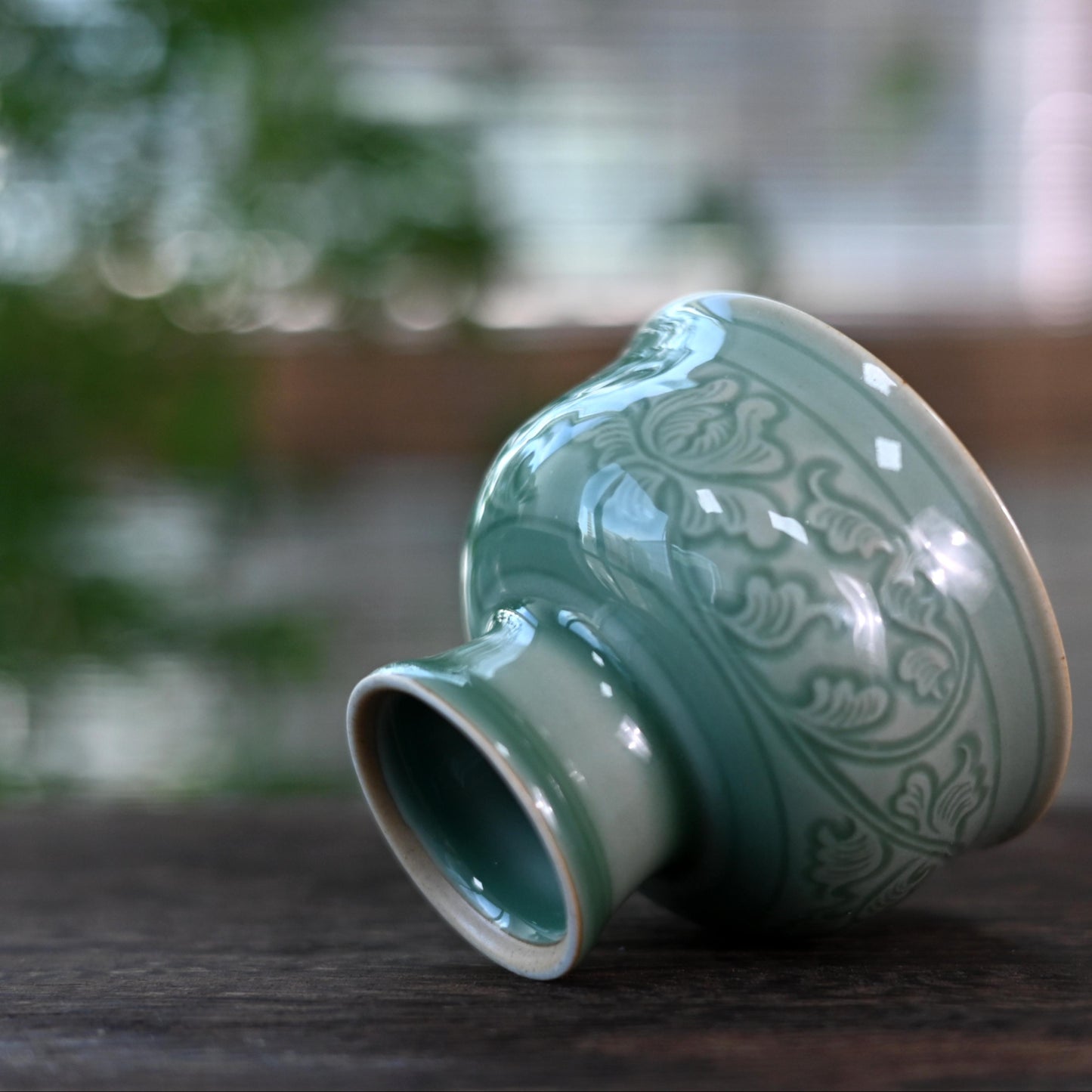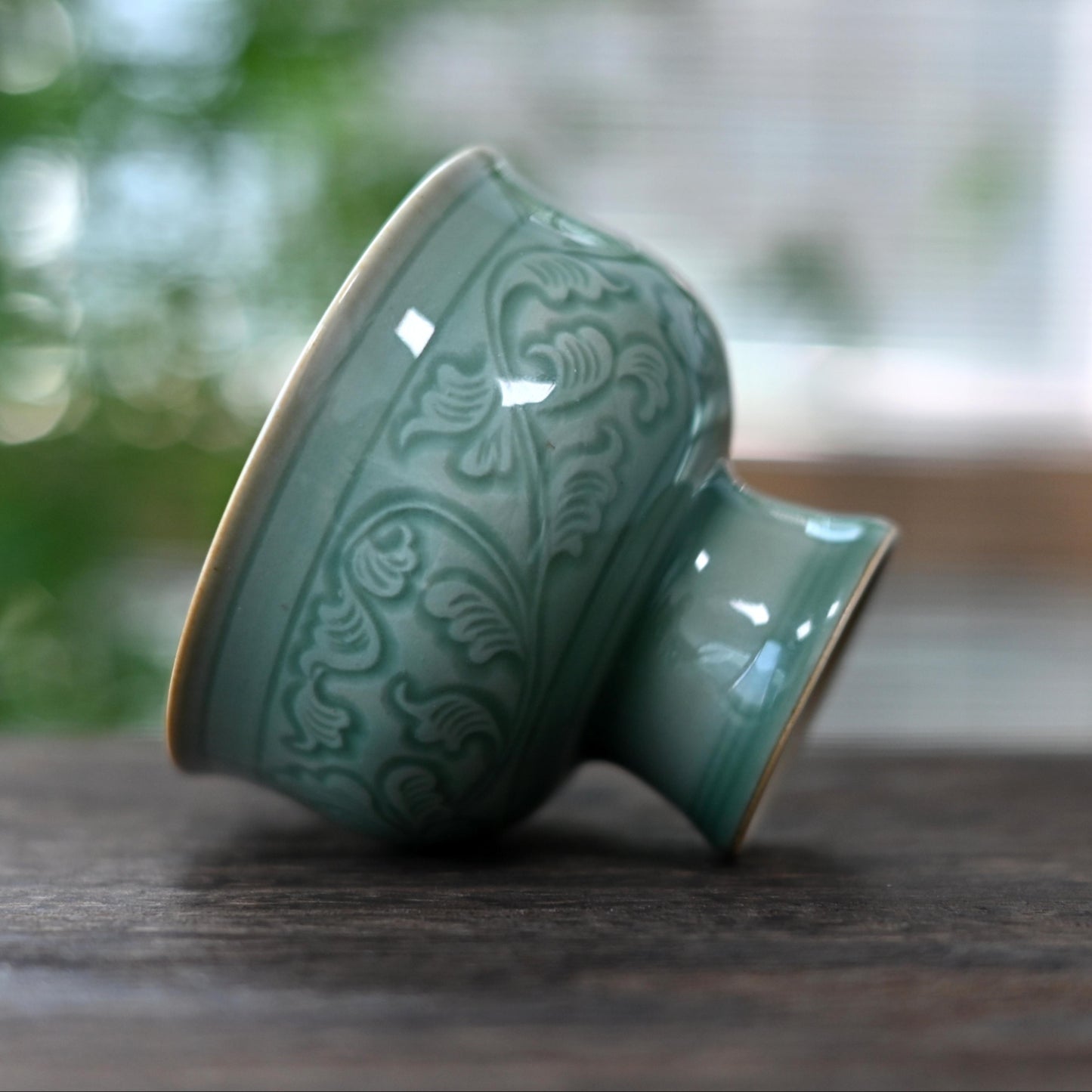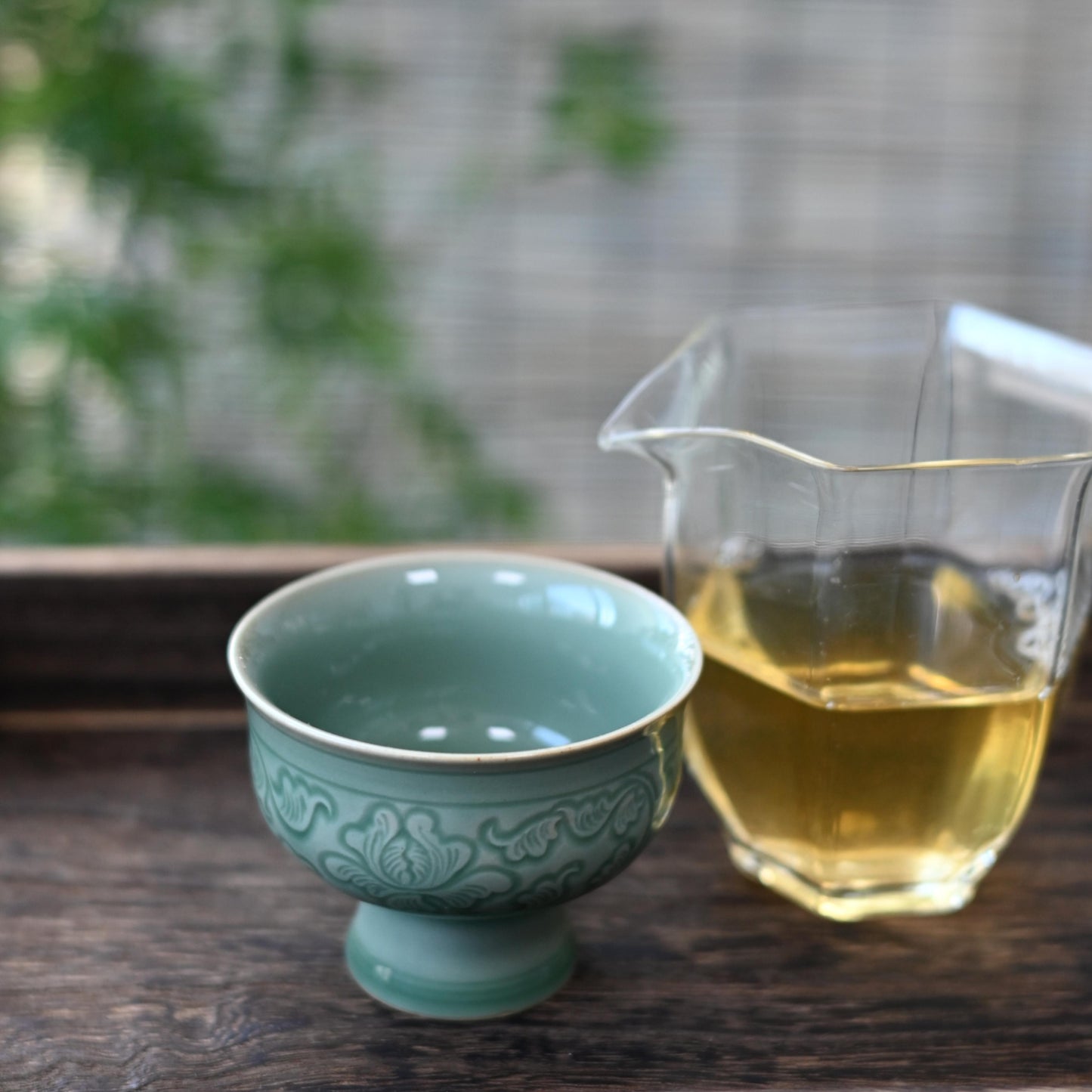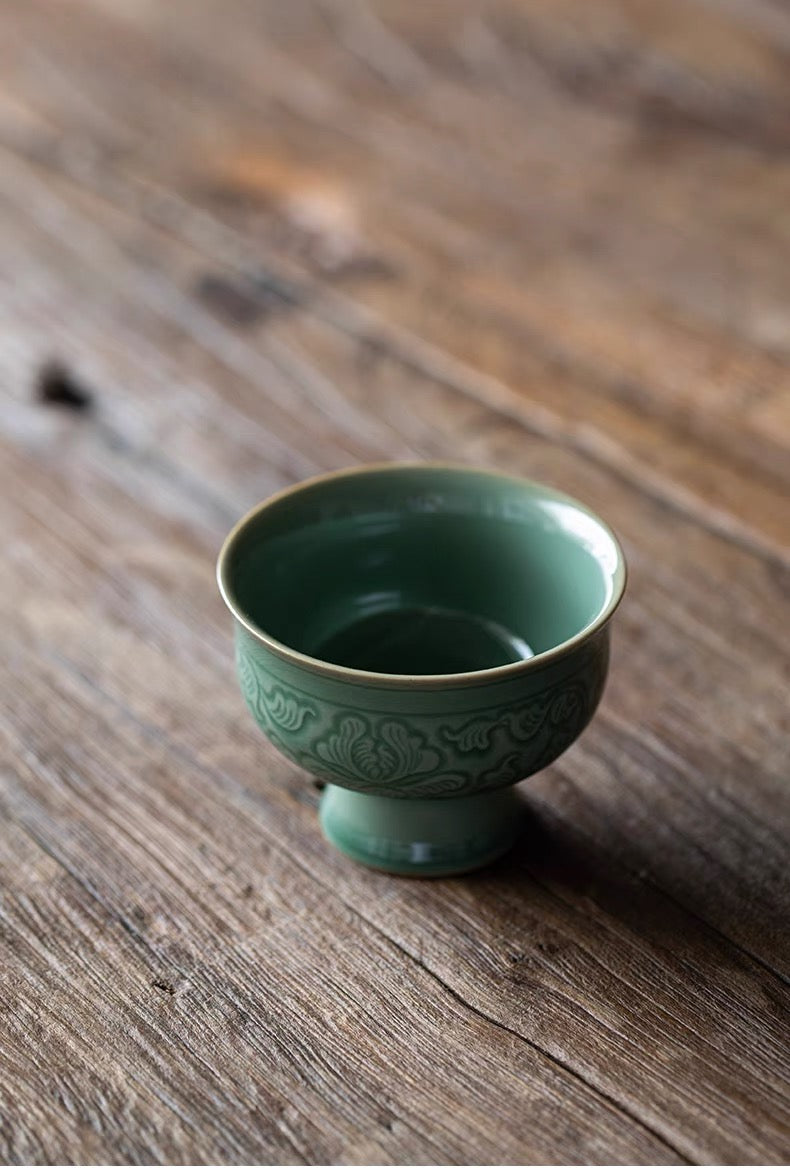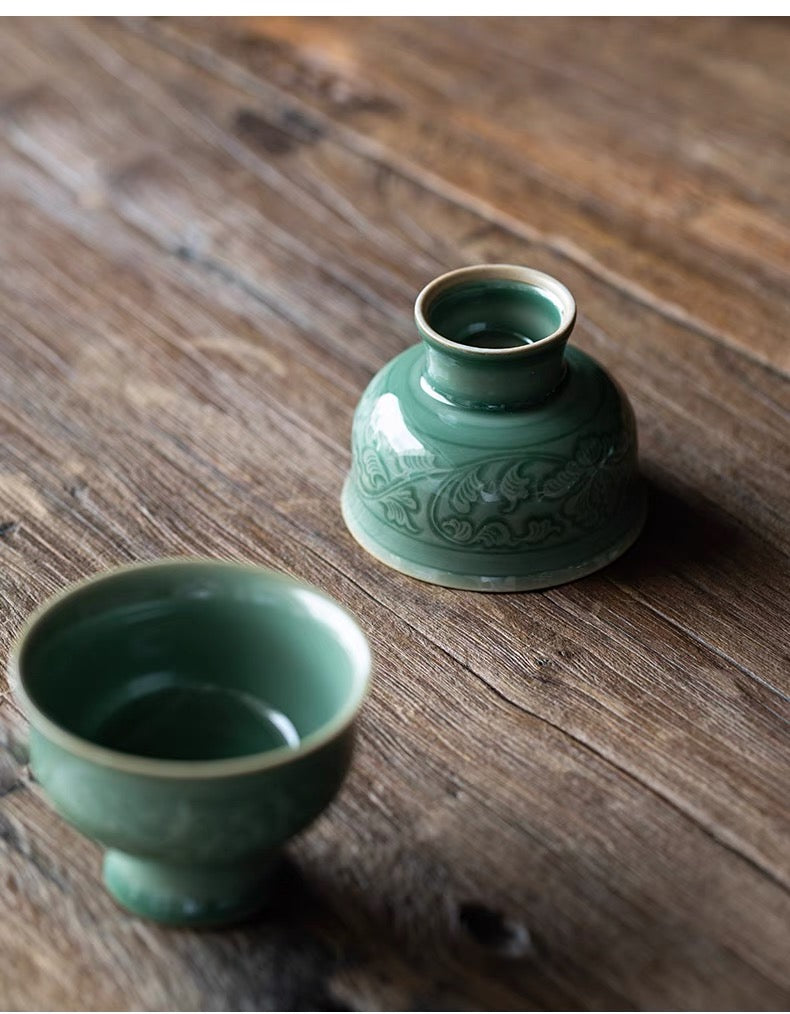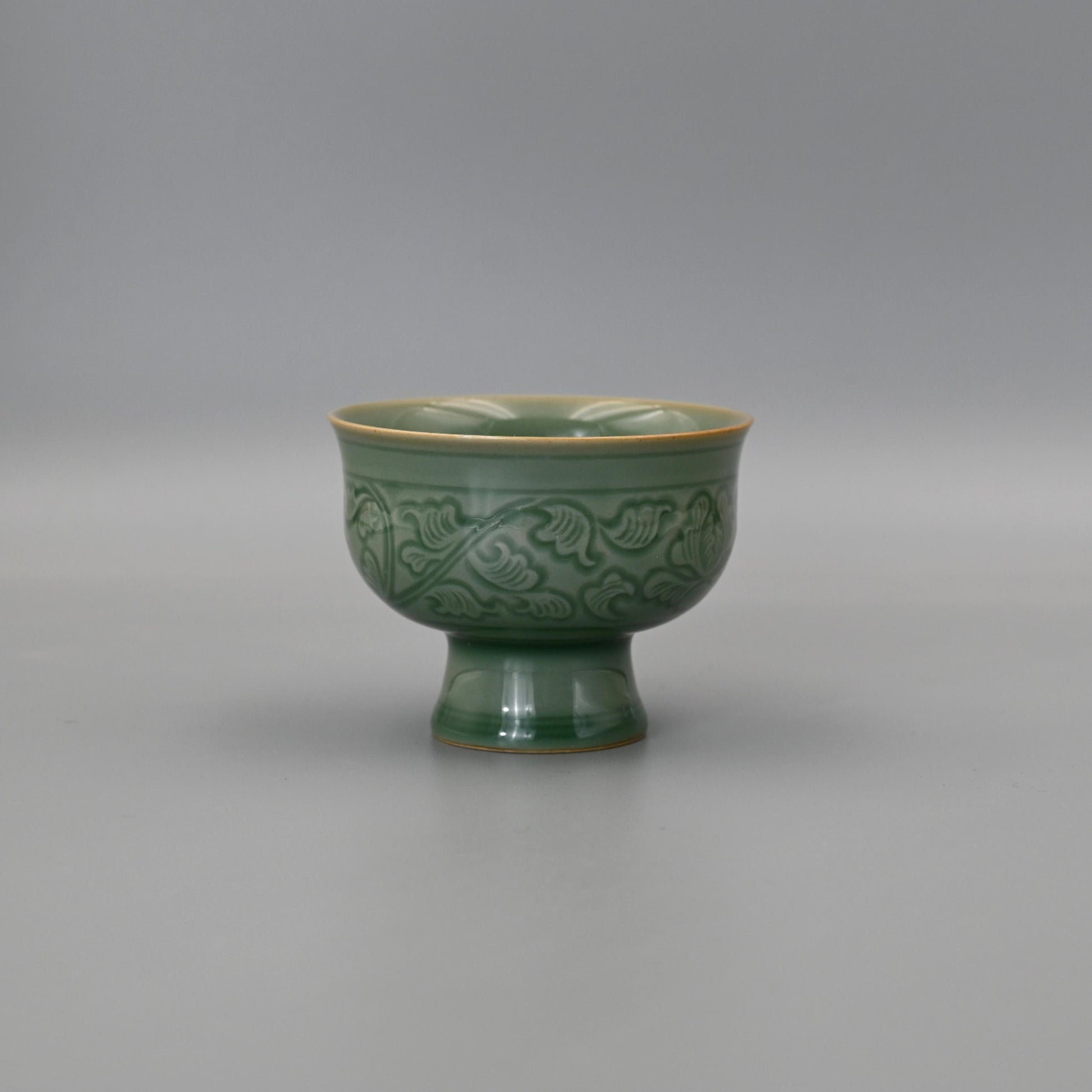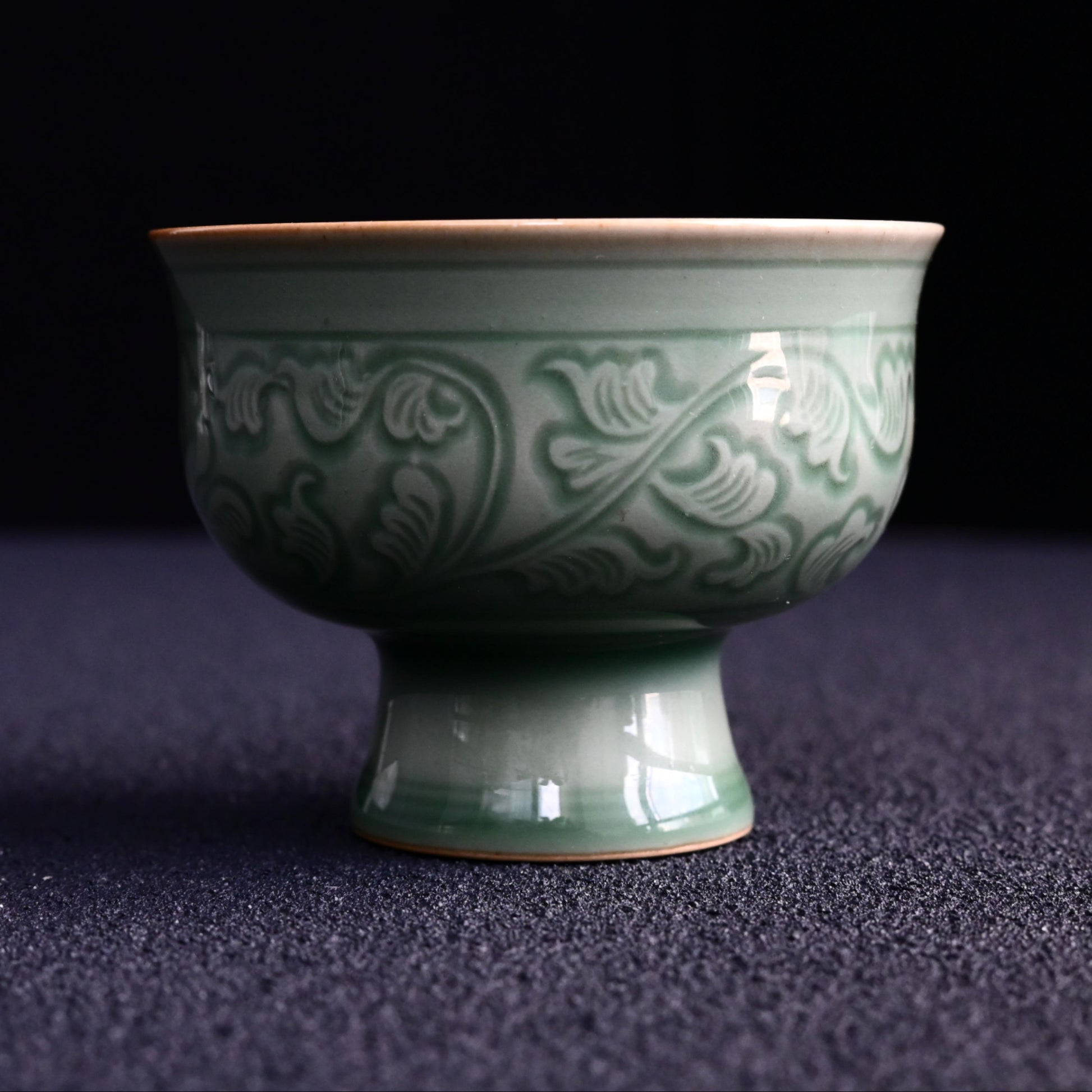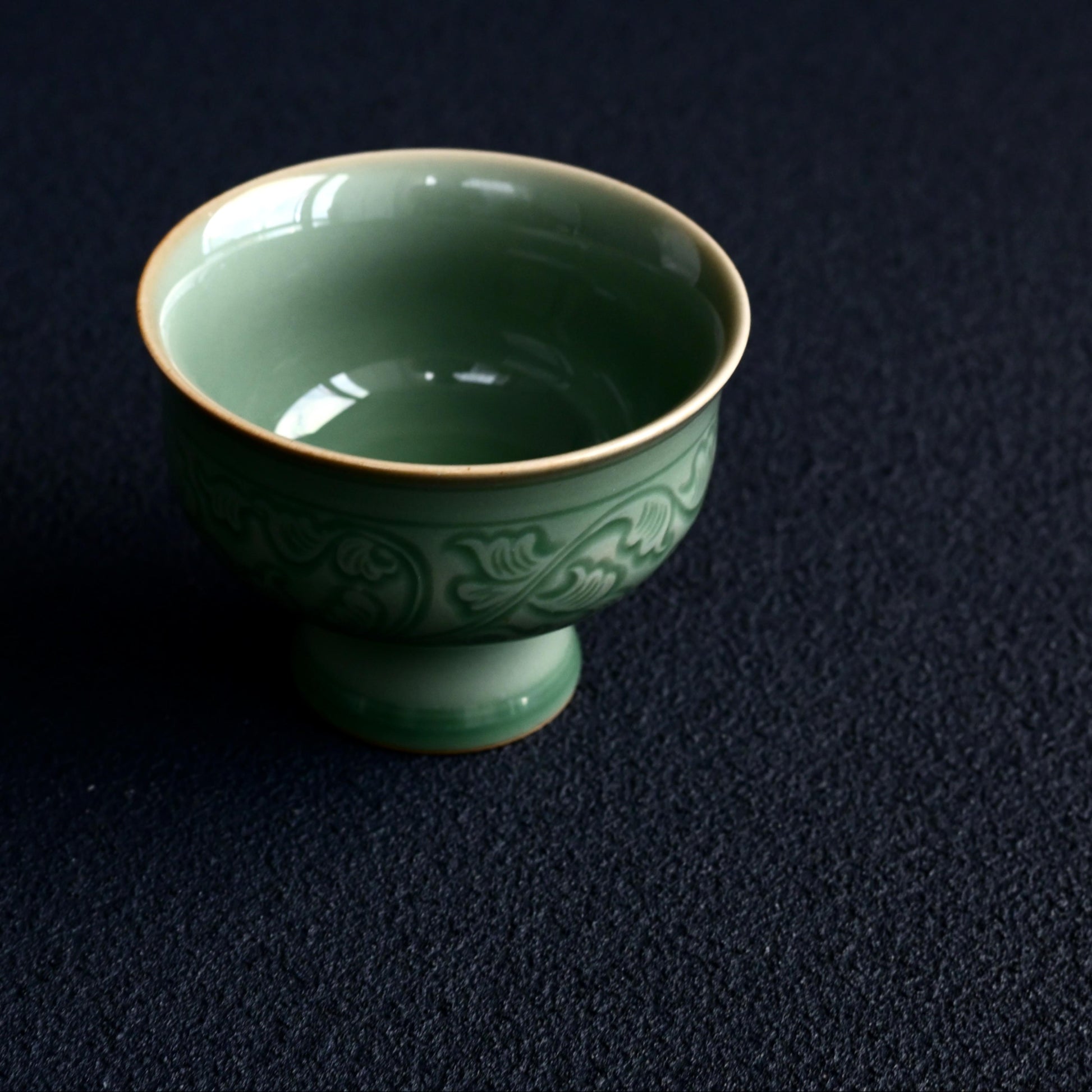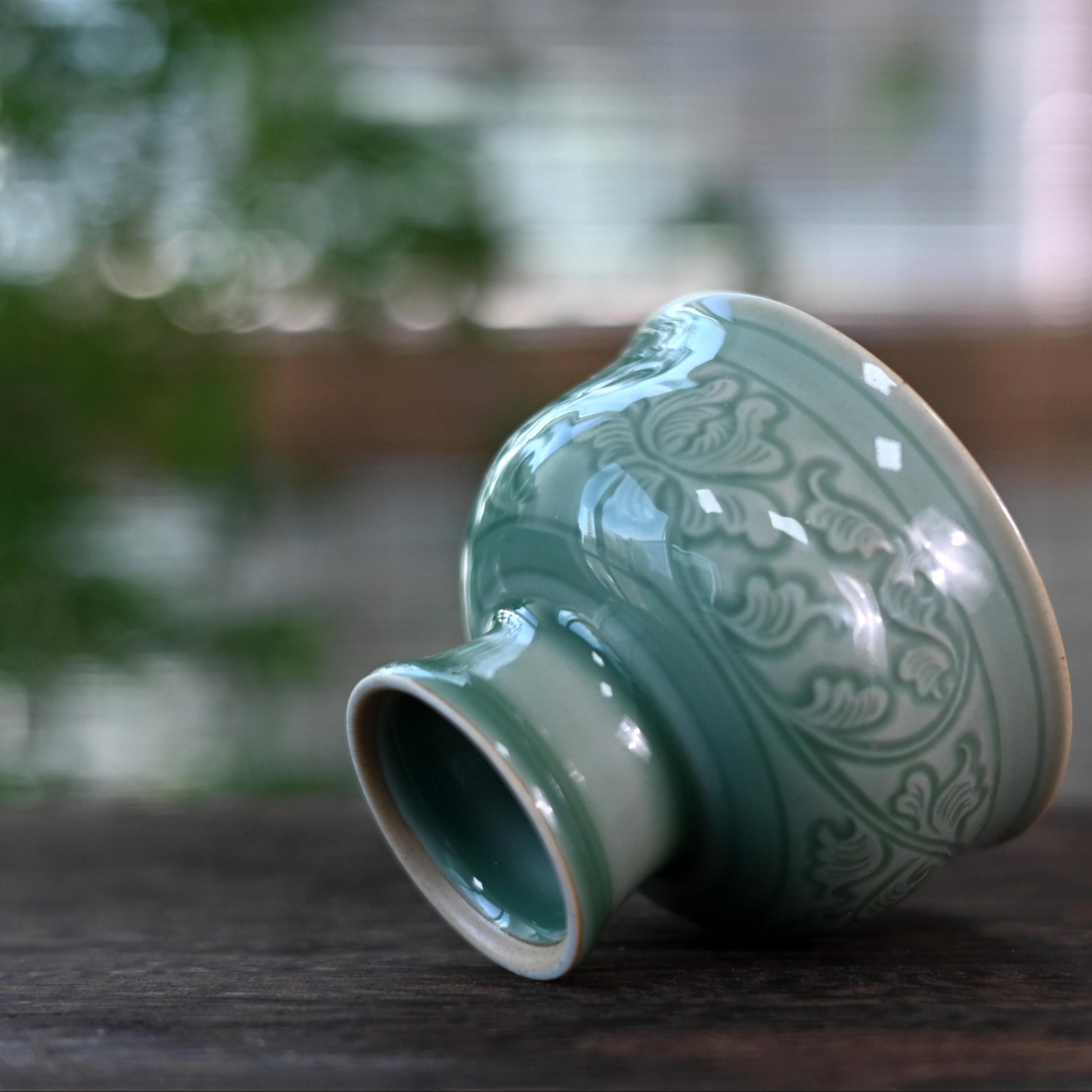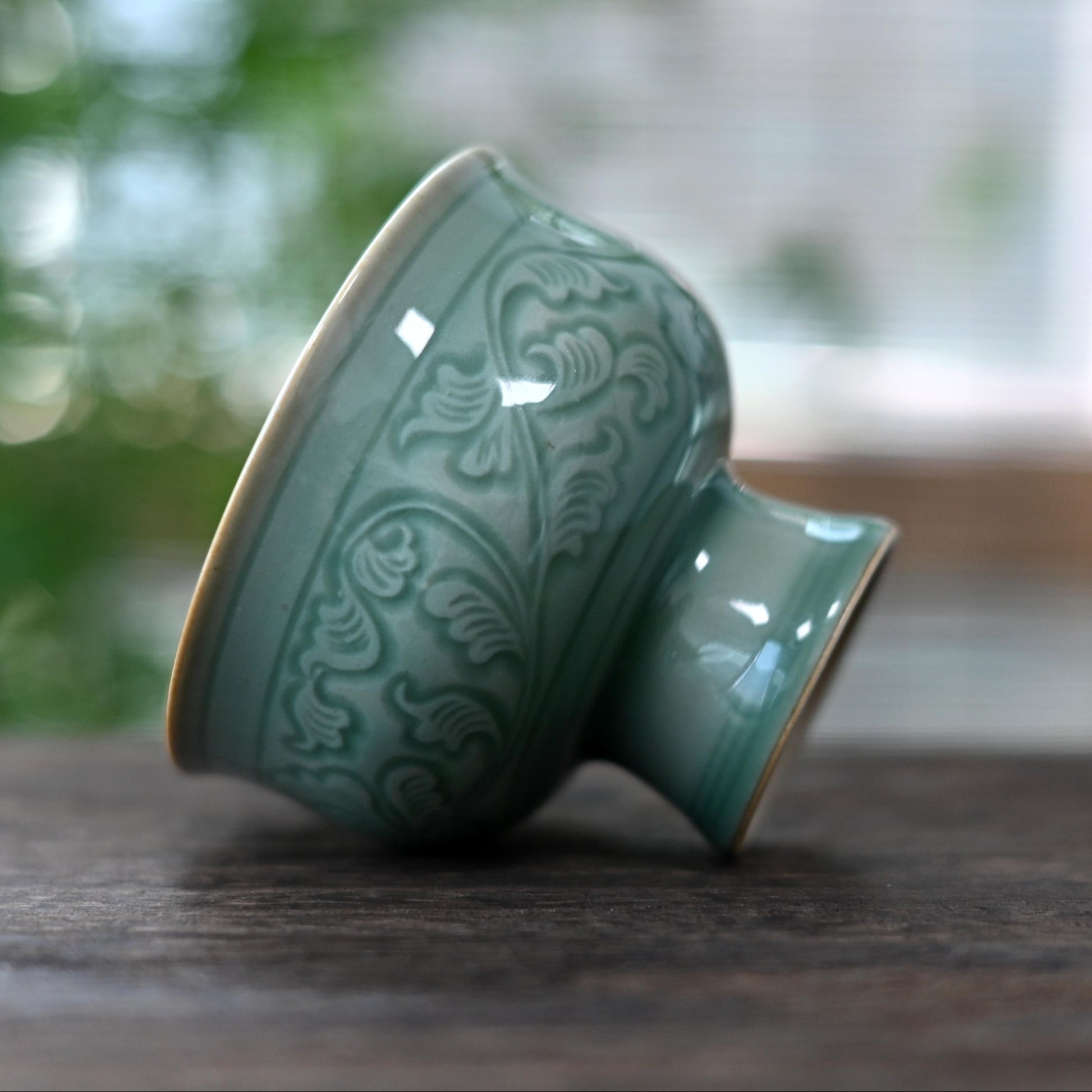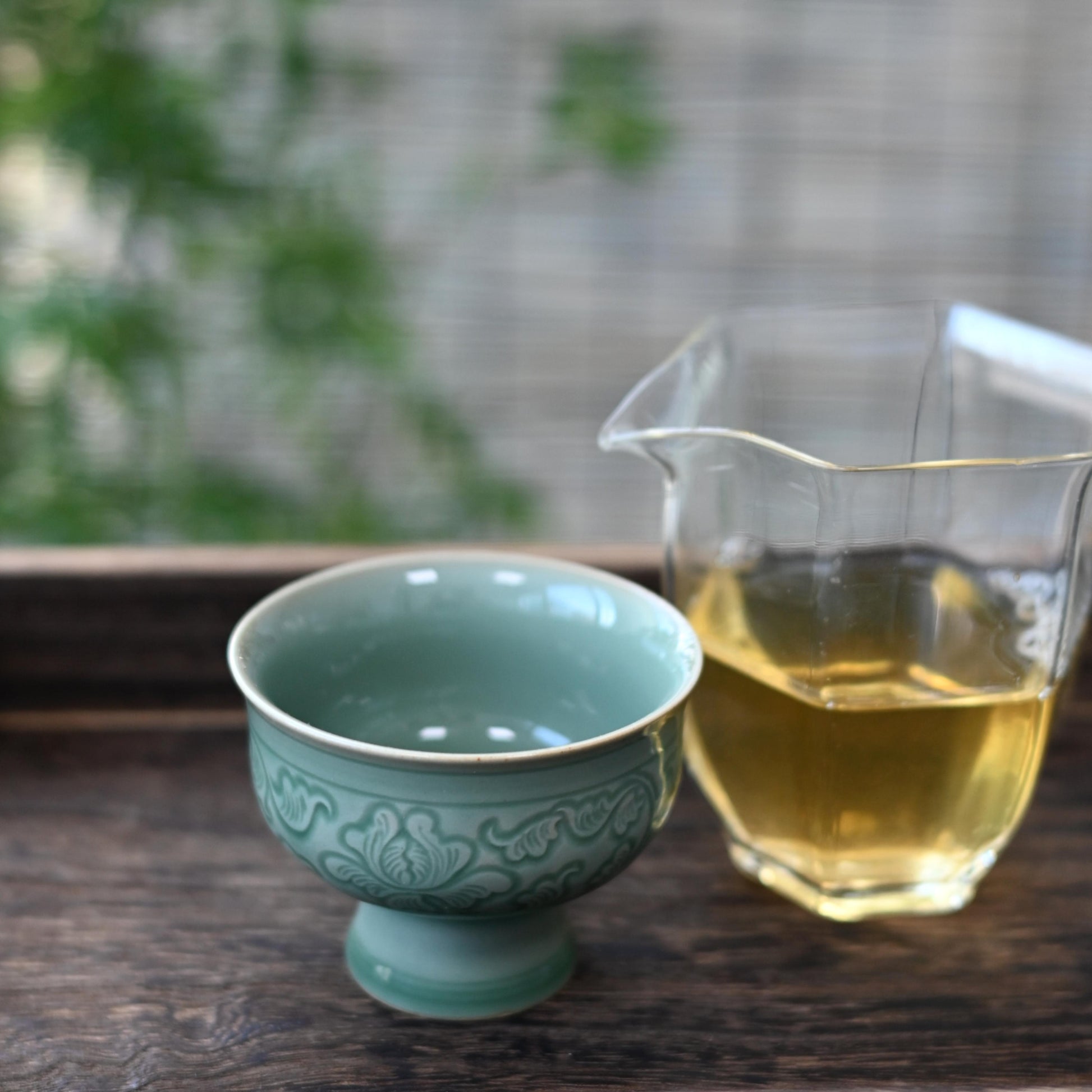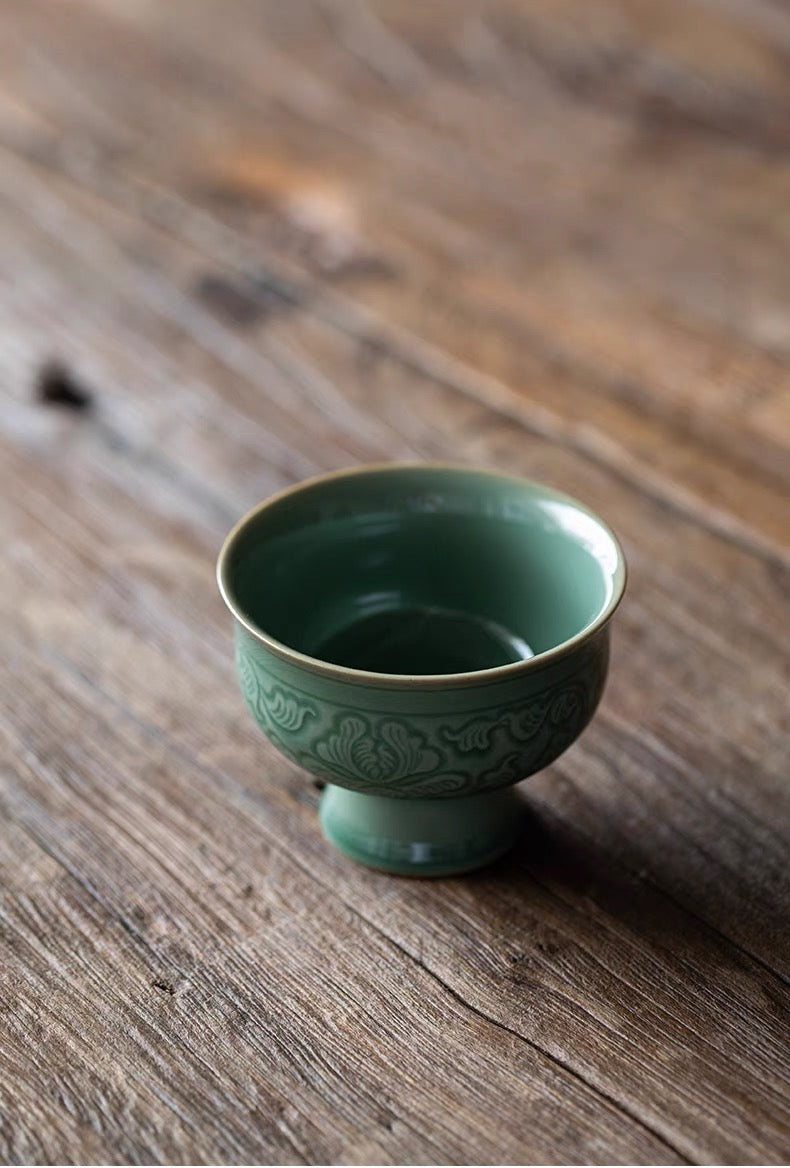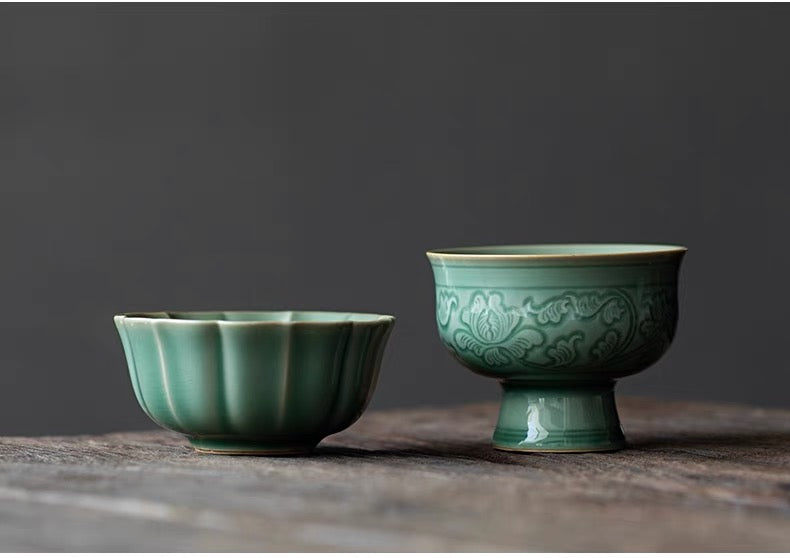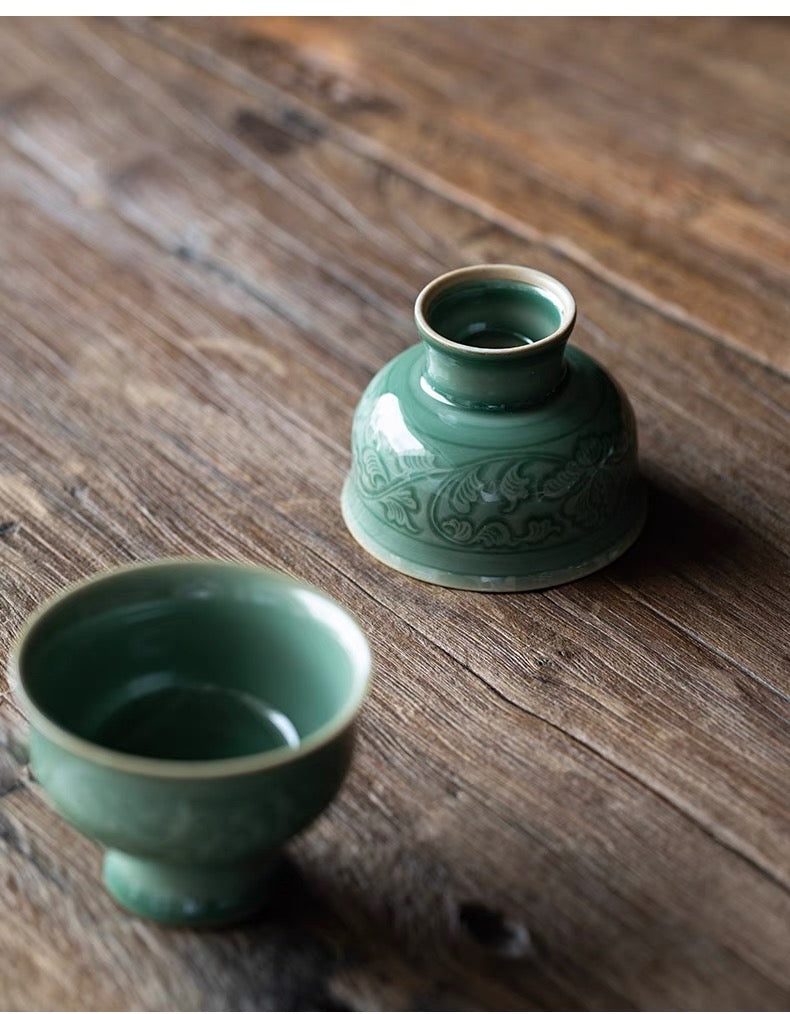Longquan Celadon High-Stem Cup with Relief Decoration of Intertwined Lotus Design
Longquan Celadon High-Stem Cup with Relief Decoration of Intertwined Lotus Design

Couldn't load pickup availability

Product Specifications
Capacity: 75CM
Diameter: 7.7CM
Depth: 5.9CM
Material: Kaolin Clay
Food Safe: Yes
Packaging: Premium gift box
Longquan Celadon Relief Craftsmanship: The carved design is a distinctive feature of Longquan celadon, differing from the vibrant colors of Jingdezhen porcelain. This craft requires a high level of skill, as the artist must control the carving depth and pressure carefully. The depth and gradient of the patterns create a sense of texture and three-dimensionality. When you hold the cup, you can feel the intricate and smooth design, providing a wonderfully tactile experience.
Celadon Glaze Color: Longquan celadon primarily features shades of green, ranging from dark to light. Its thick glaze is one of its defining characteristics, resulting in a jade-like smoothness and clarity after being fired at 1300°C. This monochromatic glaze is challenging to perfect, as celadon aims for simplicity; even the smallest bubble or black spot is easily noticeable, much like a blemish on a white sheet of paper. As a result, the success rate of producing flawless celadon is relatively low.
Intertwined Lotus Pattern: The intertwined vine pattern originated in the Han Dynasty and flourished during the Ming Dynasty. Officially called the "intertwined vine design" and colloquially known as the "intertwined flower" or "vine of longevity," this motif is characterized by its continuous, unbroken structure, symbolizing eternal vitality and auspiciousness. It is derived from the stylized forms of vines and curled grass, displaying a graceful, dynamic, and vivid aesthetic. Like the lotus petal, swirling cloud, ruyi (auspicious symbol), and fret (key pattern) motifs, the intertwined vine pattern is an important decorative element in ancient Chinese art. It is widely used in carving, ceramics, furniture, lacquerware, weaving, embroidery, jade carving, New Year paintings, papercutting, stone inscriptions, and even in the molds for traditional pastries.
SGS Certification & Quality Assurance
SGS Certification & Quality Assurance
Our products has been tested by SGS, an internationally recognized third-party inspection and certification organization.
The testing confirms that the materials used meet applicable safety and quality standards for daily use, ensuring the product is suitable for contact with hot beverages.
For more details about our testing standards and certification process, please read our full article here:
👉 Learn more about our SGS certification
Shipping & Returns
Shipping & Returns
We want you to be completely satisfied with your Saanwu purchase. If for any reason you are not happy with your order, you may request a return or exchange within 14 days of delivery. If you have any questions, our customer service team is always happy to assist you. You can reach us via online chat or email.
Handling Time
In general case, please allow us to take up to 5 business days to prepare the package.
Shipping Methods
| Countries | Delivery Time (Business Days) | Orders Over 70 (USD) | Orders less than $70 (USD) |
| United States | 5-10 Days | Free | 9.99 USD |
| Japan | 3-5 Days | Free | 1,556 JPY |
| Canada | 5-9 Days | Free | 13.80 CAD |
| United Kingdom | 5-8 Days | Free | 7.50 GBP |
| Switzerland | 6-12 Days | Free | 7.99 CHF |
| Netherlands | 6-12 Days | Free | 8.50 EUR |
| Germany, Spain, France, Italy | 6-12 Days | Free | 8.50 EUR |
| Australia | 10-15 Days | Free | 15.15 AUD |
| Saudi Arabia | 8-12 Days | Free | SAR 37.50 |
Contact Us
Contact Us
🫖 Trade name: Saanwu
📞 Phone number: +86 13422886605
💬 WhatsApp: https://wa.me/saanwustudio
✉️ Email: service@saanwustudio.com
⏰ Business Hours: 8:00 AM – 12:00 AM
📍 Physical address: 1942 Broadway St STE 314C, Boulder, Colorado 80302, United States
